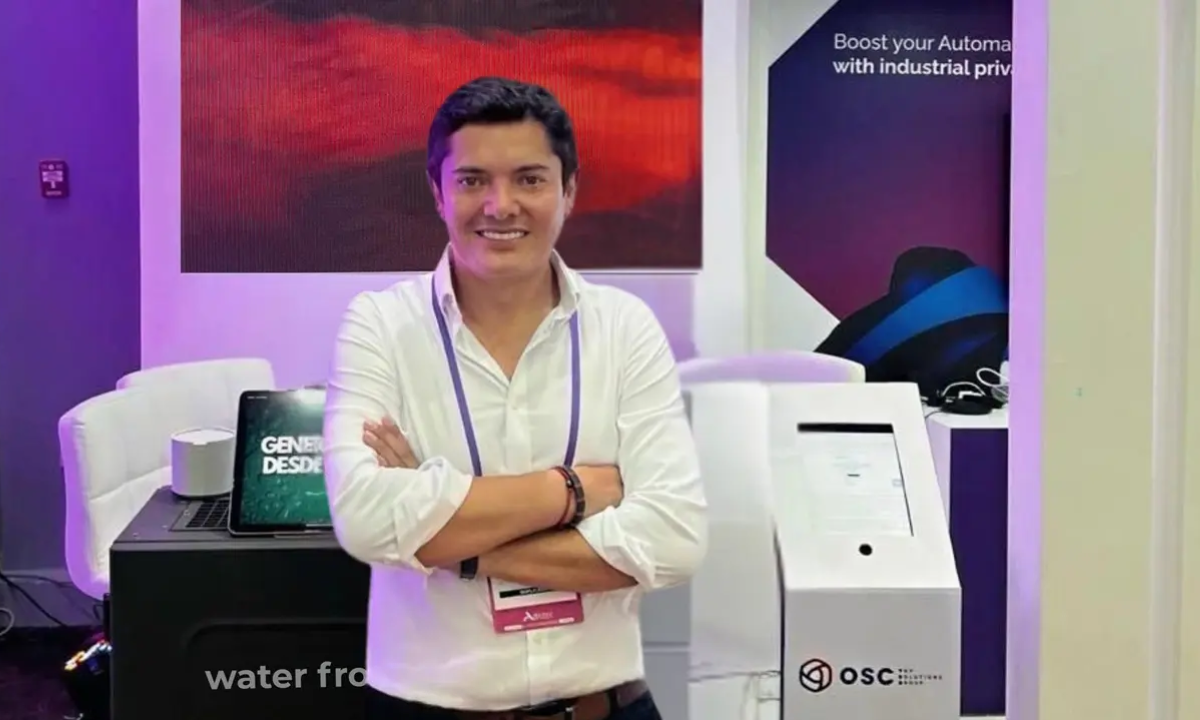From university project to renowned multinational: the Colombian company with over US$30 million in annual revenue

A startup born in Colombian university classrooms has become, almost three decades later, a multinational technology company with a continental presence.
Mauricio Rubio, CEO of OSC Top Solutions Group, leads a company based in Sopó, Cundinamarca, that began installing security systems in 1996 and now generates more than US$30 million annually in the technological integration sector.
According to Forbes Colombia, the history of OSC dates back to the 1990s, when Rubio and his partner Miguel Ortiz, students at the Universidad Distrital de Bogotá, began offering alarm, camera, and sensor installation services in municipalities near the capital.
At that time, the technical knowledge required for these tasks was rare.

Over time, the company shifted toward telecommunications. Photo: OSC.
Over time, the company shifted towards telecommunications, specializing in the implementation of 2G and 3G networks for mobile operators , in partnership with companies such as Nokia and Ericsson.
OSC's international expansion was driven by demand from its own clients, who required similar services in countries such as Peru, Ecuador, Bolivia, and Mexico.
Currently, OSC has operations in 16 countries, including the United States, and excluding only Venezuela, Guyana, and Paraguay in Latin America.
The majority of its nearly 900 employees are local talents, although the strategy and technical expertise remain centralized in Colombia.
From network assembly to technological integration Given the growing standardization of network installation services , OSC decided to transform itself into a technology solutions integrator.
This transition, which involved competing with established companies, was based on a key advantage: its independence in choosing brands and strategic partners.
Mauricio Rubio described this evolution as a step toward the concept of "Beyond Tech": offering solutions that go beyond pure technology, focusing on solving real business problems. To achieve this, OSC formed an ecosystem with more than 15 technology partners, with Nokia as its main ally.
High-impact projects in America According to the cited media, the company has executed high-impact projects, including:
- The installation of 480 telecommunications sites in northern Mexico, benefiting more than six million people.
- The creation of an interoceanic fiber optic network in Bolivia.
- The implementation of the Panama Canal IP network.
- A private LTE network for the port of Manzanillo, Mexico.
In addition, OSC has deployed more than 7,000 kilometers of fiber optic cables and participated in the installation of more than 10,000 base stations in 2G, 3G, and 4G networks.
Own financing and reinvestment policy Despite its size, OSC has been financed almost exclusively with its own resources. The company maintains a policy of reinvesting profits and does not distribute dividends .
According to Rubio, this strategy has been key to sustaining growth and addressing the financial challenges of each project.
In 2024, the company recorded revenues of US$28 million. By 2025, although it expected to reach US$45 million, it projects to close the year with US$37 million, representing a 50% increase over the previous year.
This growth has been driven by projects incubated in previous years and by the strengthening of its 60-person sales team.
Opening to investment and regional recognition Rubio doesn't rule out opening up to foreign investment in the future: "We're mature enough to consider an investment bank or a partial sale," he said in an interview with Forbes Colombia.
This year, Nokia recognized OSC as a Platinum Partner in Latin America, an endorsement that reinforces its role in strategic sectors such as mining, oil, manufacturing, ports, and smart cities.
*This content was written with the assistance of artificial intelligence, based on publicly available information released to media outlets. It was also reviewed by a journalist and an editor.
More newseltiempo





